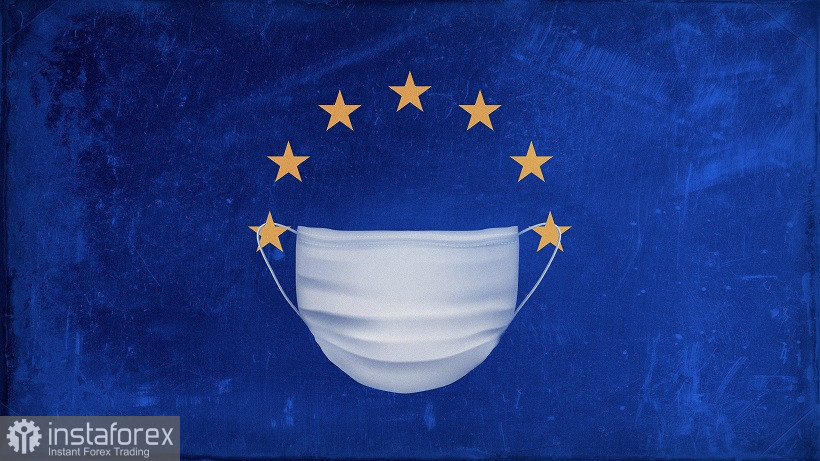At the end of the trading week, the U.S. currency showed its character again. The U.S. dollar index tested the 96th figure (for the first time this year), while the EUR/USD pair updated the annual minimum, marking 1.1250. This is already a 17-month low: the last time the price was in this price area was at the end of June 2020.
Buyers of the pair are again on the losing side, although they tried to continue the corrective growth in the first half of Friday – the high of the day was fixed at 1.1373. However, long positions in the current times of "dollar hegemony" are extremely risky: before traders could look back, the pair collapsed by more than 100 points – literally in a few hours. And although the bears immediately rebounded from the 1.1250 mark, the downside prospects for EUR/USD are quite obvious.
The conquest of the 12th figure is only a matter of time, against the background of hawkish signals from a number of representatives of the Fed and opposite signals from representatives of the ECB. Therefore, the bulls of the pair can only count on short-term corrective pullbacks, which are caused solely by the weakening of the greenback. The euro did not and does not have its own arguments for a counteroffensive.

It is noteworthy that the EUR/USD pair collapsed on Friday against the background of an almost empty economic calendar. Secondary macroeconomic reports could not provoke such volatility, especially since the pair simultaneously turned 180 degrees. In my opinion, Friday's price dynamics is due to several fundamental reasons.
Firstly, the "Friday factor." The corrective growth was of a "forced nature": every point won was given to EUR/USD buyers with great difficulty. In the afternoon of Friday, the upside impulse finally stalled, after which traders began to close longs en masse, without risking leaving them for the weekend. A kind of "domino effect" did its job: sellers seized the initiative and pulled the price to new lows with renewed vigor.
The fading of the upside impulse coincided with Christine Lagarde's speech. The head of the ECB took part in the European Banking Congress on Friday, where she once again voiced "dovish" rhetoric. By and large, she did not say anything new, repeating the theses that were voiced within the walls of the European Parliament on Monday.
The essence of her speech boiled down to the fact that the hasty tightening of monetary policy parameters "will only increase the negative impact on the eurozone economy." Lagarde reiterated the mantra that the rise in inflation is temporary. Therefore, in her opinion, "there is no point in tightening the policy, given the fact that inflationary expectations should weaken."
In other words, the head of the ECB once again expressed confidence that the European regulator has no reason to rush to raise the rate. Similar rhetoric was voiced by the chief economist of the European Central Bank, Philip Lane.
In general, the decline observed in EUR/USD is due not only to the strengthening of the dollar but also to the weakening of the euro. Pay attention to the main cross-pairs involving the single currency: they all reflect the rapid devaluation of the euro. This is partly due to the next wave of the coronavirus crisis in Europe.
As it became known, Austria is introducing a full lockdown on Monday - at least 20 days. Residents of the country will again have to work "remotely" (where possible), and all shops (except food) will be closed. Schools will be able to attend only those children who, for various reasons, cannot study remotely and need full-time lessons. Austria is the first country in the EU to reintroduce a full lockdown due to the COVID outbreak.
Experts now fear that Germany will also follow Austria in reintroducing lockdown. On Friday, the German authorities have introduced quarantine restrictions for unvaccinated people in areas with a high hospitalization rate - 12 of the 16 states of the state. At the same time, the German Minister of Health continues to sound the alarm stressing that the country needs more serious quarantine restrictions to stop the outbreak.
This is a rather alarming signal, given the fact that the daily growth rate of patients with coronavirus has reached a new record in Germany. Over the past day, 65,000 new cases were registered: this is 15,000 more cases than was detected the previous day.
In general, anti-records have been recorded in the country for the 11th day in a row. Therefore, the risk of introducing a full lockdown, following the example of Austria, is quite high. This fundamental background puts pressure on the euro, and not only in tandem with the dollar.
The U.S. currency, in turn, received support from the Fed representatives. Federal Reserve Governor Christopher Waller said that the regulator should speed up the tapering process. He was worried about rising inflation, and also noted that the American labor market is "at a very fast pace" approaching levels of maximum employment.
Earlier similar statements were given by other representatives of the Federal Reserve, including James Bullard, John Williams, Raphael Bostick, and Charles Evans. The Fed's hawk wing is strengthening, providing significant support to the dollar.

Thus, the downside trend for the EUR/USD pair has not yet exhausted itself. Almost all fundamental factors suggest that the pair's bears will again try to gain a foothold within the 12th figure, despite the current corrective pullback. The first target of the downside movement is the level of 1.1250 - this is the new price low for the year. Any corrective spikes can be used to open short positions.
 English
English 
 Русский
Русский Bahasa Indonesia
Bahasa Indonesia Bahasa Malay
Bahasa Malay ไทย
ไทย Español
Español Deutsch
Deutsch Български
Български Français
Français Tiếng Việt
Tiếng Việt 中文
中文 বাংলা
বাংলা हिन्दी
हिन्दी Čeština
Čeština Українська
Українська Română
Română

